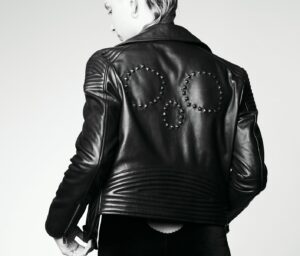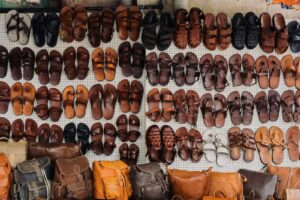I’ve often marveled at the allure of leather, a material that effortlessly combines luxury with practicality. From the moment you touch a leather jacket or bag, you can feel its unique texture and timeless appeal. But then comes the inevitable question: why is leather so expensive? High-quality leather pricing is influenced by its natural origins and the meticulous craftsmanship involved in its production.
Producing genuine leather is no simple task. Each step, from obtaining the animal hide to the intricate tanning process, demands skill and precision. This painstaking artistry ensures that leather products aren’t just stylish; they’re built to last. When you invest in leather, you’re not just buying a product—you’re acquiring a piece that can endure for years, if not decades.
Moreover, the variety in leather types adds another layer to its cost. Exotic leathers like ostrich or alligator command even higher prices due to their rarity and desirability.
Understanding Leather Costs
Leather prices result from several factors, primarily the types and quality of leather and sourcing availability. Cost factors in leather production include the materials used, the labor-intensive processes involved, and the economic conditions affecting global trade. Manufacturing methods also influence leather pricing, contributing to its reputation as a luxury material in the fashion industry.
Types and Quality of Leather
Different types of leather present varying levels of quality and durability. Full grain leather, for instance, retains the entire grain of animal skins, making it the highest quality leather available. Its natural imperfections and strength add to its allure for quality leather goods. In contrast, top grain leather undergoes sanding to remove blemishes, offering a more uniform appearance but slightly less durability. Other leather types, like bonded leather, combine leather scraps with synthetic materials to create more affordable prices but lack the resilience of full grain options. Exotic leather types like ostrich skin leather and crocodile leather demand a premium due to their rarity and visual appeal, which attracts luxury brands in the fashion industry.
Premium leather affordability often depends on balancing quality and manufacturing efficiency. Luxury brands aim to create products that justify the cost while providing durability and exclusivity to consumers. However, alternatives like synthetic or bonded leather offer affordability without the same longevity.
Sourcing and Availability
Sourcing plays a crucial role in determining the price of leather. The best hides come from regions renowned for producing quality leather, such as the Italian leather industry, which is famous for its craftsmanship. This makes Italian leather highly sought after for luxury leather goods. However, leather expensive when availability is limited, further affecting leather prices.
The tanning process also impacts cost. Vegetable tanning, which uses tree bark, offers an eco-friendly approach but requires more time and skill compared to other tanning methods. Fully dyed leather is another example where the need for high-quality animal hides and intensive processing contribute to higher costs. As leather scraps and cheaper alternatives like white leather jackets and leather seats become more prevalent, the demand for authentic materials remains strong despite the competitive landscape.
The Leather Production Process
Leather’s hefty price tag often stems from its intricate production process. This includes transforming raw animal skins into high-quality leather, crafted into luxury goods.
Tanning Methods
Tanning, the core of leather production, transforms raw animal skins into durable materials. Vegetable tanning uses natural materials like tree bark. It enhances the leather’s strength and environmental appeal, but is laborious and time-consuming, impacting leather prices significantly. Other tanning methods, like chrome tanning, offer faster production, catering to the demand for more affordable prices. They still maintain durability, though not always matching the unique characteristics of vegetable-tanned leather. The choice of tanning method influences not just cost but also the quality and desirability of the finished leather goods.
Craftsmanship and Labor
The craftsmanship involved in creating leather goods, especially those from the Italian leather industry, plays a crucial role in leather pricing. Skilled artisans meticulously select only the best hides and employ time-tested techniques to create high-quality leather goods. Each leather item, whether a white leather jacket or leather seats, reflects dedication and expertise, which luxury brands value highly. Even exotic leather types, which require nuanced handling, contribute to why leather’s expensive. Despite the availability of cheaper alternatives like faux leather and synthetic materials, the fashion industry continues to appreciate the unique touch and feel of genuine leather.
Economic Factors Influencing Price
Economic factors play a crucial role in determining leather prices. Market dynamics, production methods, and international trade regulations all contribute to the cost of leather items.
Environmental and Ethical Considerations
Leather production depends heavily on natural materials like animal skins and tree bark for vegetable tanning. This reliance on nature raises ethical concerns over sustainability and animal welfare, affecting leather pricing. The demand for environmentally friendly and ethically produced leather has pushed luxury brands to adopt cleaner methods, ultimately increasing the cost. Moreover, as consumers lean towards synthetic materials and vegan leather, the leather industry faces pressure to maintain high ethical standards, further impacting prices.
Import and Export Dynamics
The global nature of leather trade makes import-export dynamics a key factor in pricing. Countries with renowned leather industries, such as Italy, export quality leather goods and finished leather to international markets. Trade regulations, tariffs, and transportation costs add to the price of leather. Additionally, fluctuations in currency exchange rates influence the affordability of Italian leather and other exotic leather types. The import of cheaper leather products from regions with lower production costs keeps price competition, but the fashion industry often prefers high-end items that reflect luxury and craftsmanship. This reliance on high-quality imports sustains leather as an expensive material in the global market.
The Appeal and Value of Leather
Leather items have long been esteemed for their quality and allure. Leather pricing reflects various factors, from craftsmanship to the unique characteristics inherent in this natural material. While synthetic materials offer cheaper alternatives, genuine leather remains a symbol of luxury and status, particularly within the fashion industry.
Durability and Longevity
Quality leather goods stand out for their exceptional durability and longevity. Unlike many other materials, well-maintained leather can last for decades. This makes leather expensive as a premium investment. Leather prices often reflect this durability, as consumers understand the long-term value of owning leather seats or a leather jacket. The tanning process, specifically vegetable tanning, enhances durability further, ensuring these items can withstand daily use.
Fashion and Status Symbol
In fashion, leather is synonymous with sophistication and status. Luxury brands capitalize on the demand for high-quality leather goods, offering products made from only the best hides. Items like a white leather jacket are not just clothing but an emblem of style. Exotic leather types, such as those from animal skins, elevate this status further, with their rarity contributing to higher leather pricing. While cheaper leather products exist, the allure of real leather endures, driven by its association with fashion trends and high-end craftsmanship.
Summing up: Why Is Leather So Expensive
Leather’s high cost is justified by its unique blend of luxury, durability, and craftsmanship. The intricate production process, from sourcing quality hides to skilled tanning methods, ensures each piece is a testament to quality. While economic and ethical factors influence pricing, the enduring appeal and status of genuine leather make it a sought-after material. Investing in leather means choosing a product that offers longevity and elegance, making it a worthwhile addition to any collection. Despite the availability of alternatives, the unmatched quality and prestige of genuine leather continue to captivate those who value authenticity and luxury.
Other suggest articles:




